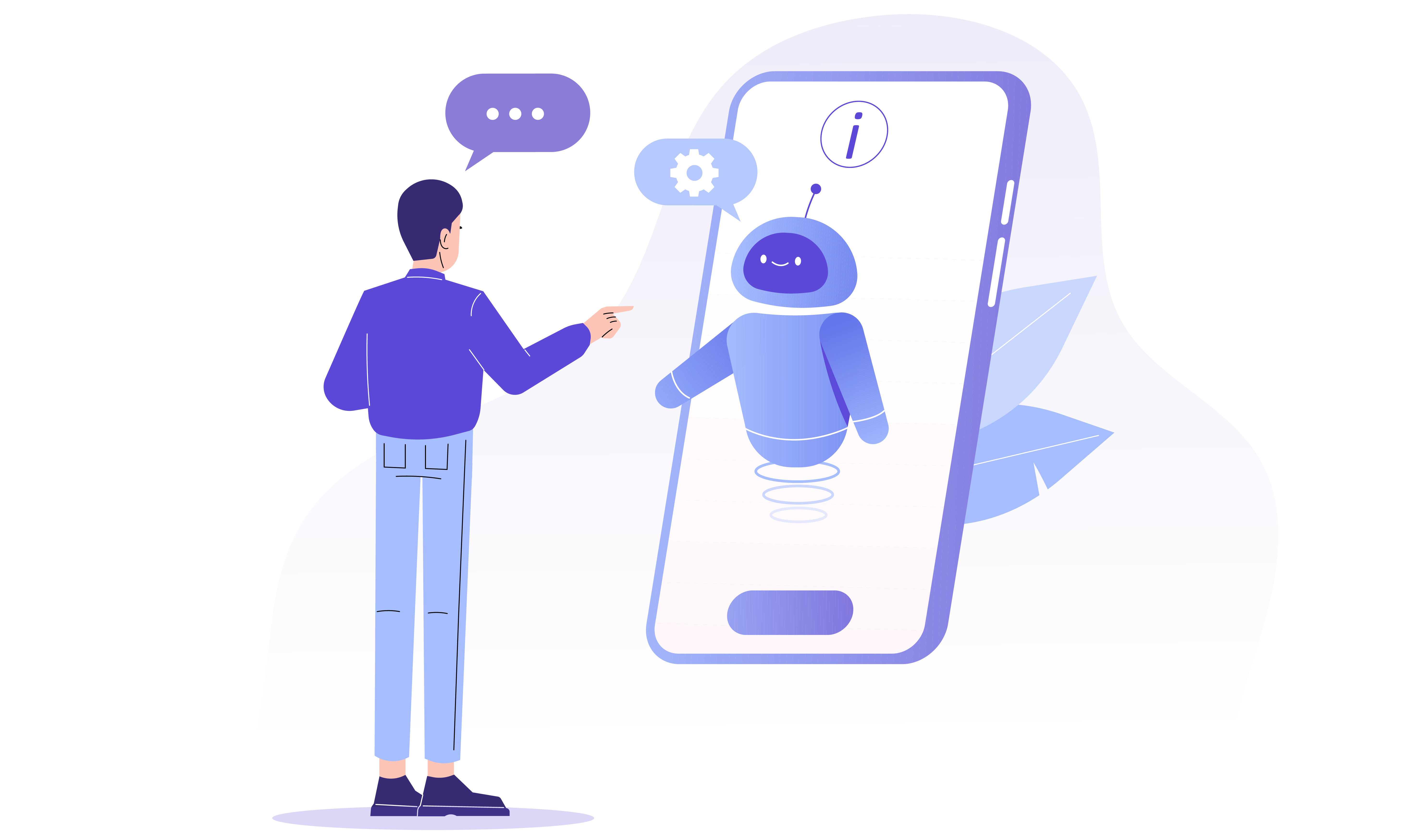Automated Assistants: 6 Ways to Simplify Your Chatbot Strategy
Automated Assistants: 6 Ways to Simplify Your Chatbot Strategy

When combined with the latest Workforce Management (WFM) solutions, automated assistants have the power to improve so many facets of your contact centers. This includes workforce flexibility, employee satisfaction, and the customer experience all in one go. Reports indicate their influence is set to continue especially among the younger generation.
Most recently, Calabrio surveyed over 250 contact center agents and discovered that more agents aged 30-44 years think chatbots will have a greater impact on their job than years prior. They are also more likely to believe chatbots will have a greater degree of impact than agents aged 45-49 (10%).
However, like all technological advances, effective virtual assistants’ implementations depend on a thoughtful approach. There needs to be a plan to effectively blend the needs of the organization with those of the customer.

Step-By-Step Guide to Scaling Chatbots Successfully
Here is a six-point plan to getting started:
1. Outline Clear Roles and Responsibilities
As chatbots rise up the digitalization agenda, it is important to establish a dedicated team of experts. Gartner has identified “three pillars of chatbot responsibilities: business domain, conversation management and technical implementation.” Focus on each of these areas to collectively drive effective business oversight and decision-making. Ways to do this include:
- Optimized interactions
- Customer value
- Enforced application integration
- Data management best practices
2. Involve the Right People from the Beginning
Who are the people who will make or break the virtual assistant project? They might be those responsible for deploying the technology. They could also be the leaders of the customer service department. More often than not, they are the budget holders.
Next, set realistic expectations and measurable goals for your chatbot project. It’s crucial to define expectations as clearly and tangibly as possible. That way everyone understands what constitutes good and bad results.
3. Establish the Common Questions Customers Ask
Starting with an FAQ project for customer facing chatbots by taking a look at your website’s FAQs. If they are already written in the customer’s words and prioritize the most common queries, that’s a good sign. It shows that the contact center has analyzed customer needs and created well-informed responses.
If FAQs are regularly updated, a chatbot begins on solid foundations. To extend the value of automation further and be even more accurate with trend mapping/grouping, use a modern speech analytics engine. This will be able to identify common questions.
4. Translate Agent Training and Evaluations Over to Chatbots
When coaching agents to interact with customers, a key lesson is to use plain English and remove jargon. The same principle applies to chatbot scripts. To ensure that customers don’t have to wade through technical information and complex phrases, pass these scripts through a readability assessment.
A simple, online test that uses a Flesch–Kincaid readability score will do the trick. However, even with well-crafted scripts and innovative solutions, chatbot success cannot be guaranteed. There remains plenty to consider from a people, process, and technology perspective. Just as the contact center uses quality assurance for agents, monitor chatbot performance over time too.
It’s important to tracking metrics such as customer satisfaction, deflection rates, and user numbers. These can provide valuable insights into whether the pre-defined scripts are landing well with customers. Analytics systems that monitor and predict sentiment, predictive QM scores, goal completion rates, and spot trends take this to the next level. This further improves the customer experience.
5. Don’t Apply Chatbots to Emotional, Complex Queries
While customers expect ‘quicker response times’ (93%), they also desire ‘human agent availability over bots’ (68%). Bridging the digital and human worlds really makes chatbots come into their own. Although technology is evolving rapidly, there is still need for more work. Currently, automated personal assistants work best when managing routine and transactional queries.
They’re not so good when things get complex and emotive. One approach is to analyze the top reasons for customer contact. Then, consider which can be resolved with a rigid response and could be dealt with by chatbots. This is often a customer’s preferred method of resolution for simple questions. For the more complex questions left on the list, create process flows. Also identify further chatbot features that can deliver the required responses possibly combined with a human agent.
6. Use Automated Assistants for Workforce Management and Agent Wellbeing
Automated assistants can do much more than interact with customers. Take a workforce management (WFM) virtual assistant as an example. It informs employees when they can work overtime to earn extra cash or take voluntary time off. Planners also benefit as the bot sorts through absence requests, saving time for them to concentrate on more tricky forecasting and scheduling tasks.
Then, there’s intraday automation. By monitoring service levels, these bots offer advisors opportunities to change their breaks, helping to better meet incoming demand. The result is increased operational efficiency, empowered employees and improved work-life balance.
Empower Your Agents With Automated Assistants
Now that you have a better understanding of how to use automated assistants, it’s time to put a plan in action. Watch your agents thrive without hurting your bottom line. Learn more in our latest Health of the Contact Center 2021 report: Agent Wellbeing & the Great Resignation.









